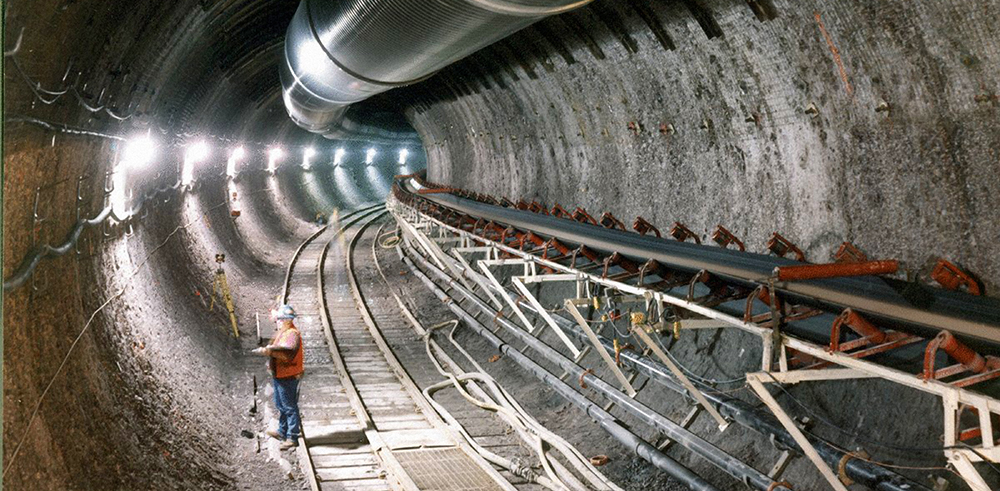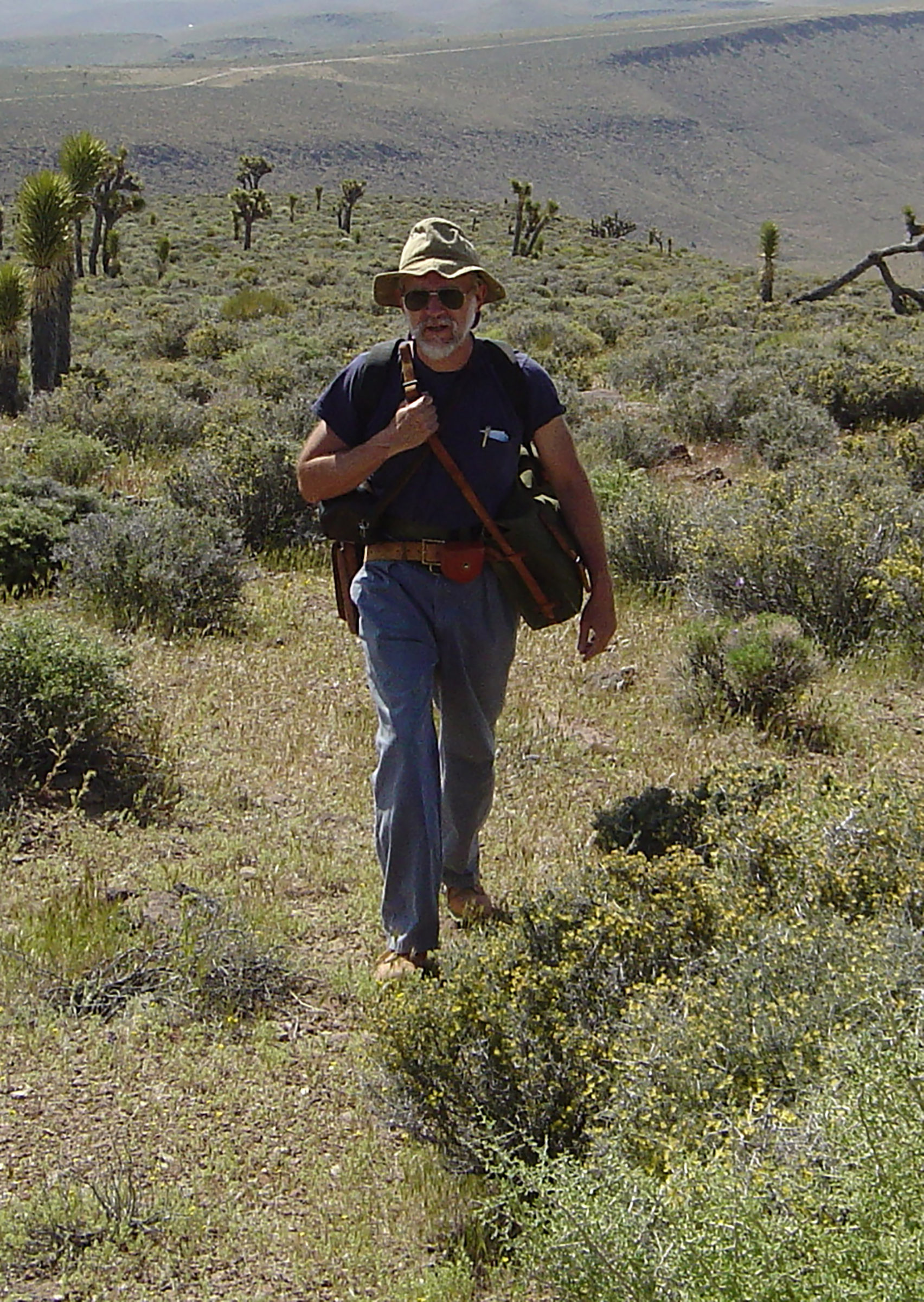
After years of partisan gridlock, a languishing nuclear-energy sector seems set to receive a jolt of new life. As of this writing in late November, the new infrastructure bill calls for $3.2 billion to be dedicated to the Department of Energy’s Advanced Reactor Demonstration Program, and $6 billion in subsidies for struggling nuclear plants. But strikingly, the bill does not mention disposal of nuclear waste. Another bill, passed at the end of last year, sets aside a trifling $28 million for nuclear waste disposal.
Because nuclear power production releases no greenhouse gases, it is in one crucial respect an environmentally friendly energy source. But the process does create spent nuclear fuel, a uniquely deadly pollutant. How will we deal with the expense and hazards of storing it?
This is a question the nation once took seriously. I spent seventeen years as a geologist with the U.S. Geological Survey evaluating the stability of Yucca Mountain in Nevada for use as a permanent, underground site for storing nuclear waste, assessing geologic hazards including earthquakes, volcanism, and fault displacement. Yucca Mountain has been more carefully studied than any other comparable volume of rock on earth — and it remains the best option for storing at least part of our nuclear waste.

The Yucca project may be dead, but the political debate about where to store the waste must not die with it.
Our current, haphazard solution — if indeed it can be called a solution — includes storage of our more than 80,000 tons of hot, radioactive spent fuel in cement dry casks and cooling pools, kept under surveillance at the power plants, functioning or non-functioning, where they were produced. This amount increases by about two thousand tons each year. In addition to spent fuel from power plants, our radioactive waste infrastructure must also handle the residue of nuclear bomb production, which amounts to around ninety million gallons of liquid waste, much of which is kept in underground tanks in a site at Hanford, Washington. Here too are stored decommissioned reactors from naval vessels, containing their own spent fuel.
All of this constitutes a de facto permanent nuclear waste storage infrastructure of varied age, design, and condition, distributed across the country. Decades’ worth of toxic radioactive waste would seem to qualify as “legacy pollution” that someone, sooner or later, needs to deal with. Some politicians duck the issue by decrying the cost of government and the national debt, looking for ways to cut spending, while others bemoan the cost to our grandchildren — and the danger — of kicking the can down the road.
As we recently marked the twenty-year anniversary of 9/11, which left thousands dead, we must consider the possibility — God forbid — of a worse event: Suppose the terrorists had flown the airliners into nuclear power plants near metropolitan areas. Even without on-site storage of spent fuel, that scenario is terrifying. But if, additionally, the containment vessels and cooling pools storing decades of waste had been destroyed, the exposed zirconium tubes that store the spent fuel assemblies could have ignited, chernobylizing a considerable area and dooming tens of thousands to die. Some elements, like cesium-137, would remain highly radioactive for decades, and so the disaster would be ongoing.
So what to do about this vulnerable, unmentioned infrastructure that hosts our nuclear waste?
The answer has always been a national geologic nuclear waste repository. The 1982 Nuclear Waste Policy Act made the Department of Energy (DOE) the legal custodian for all spent nuclear fuel, and tasked it with building permanent underground disposal sites for the nation’s nuclear waste. We were on the path to achieving at least part of that critically important piece of nuclear energy infrastructure until President Obama killed the Yucca Mountain project in 2010.
Obama had been on record as opposing Yucca Mountain during his primary campaign, a position aimed at winning the support of Nevada, a battleground state. But it took a political favor to Nevada Senator Harry Reid to finally bring him to kiss off the $15 billion and thirty years of research the federal government had invested on the project.
The political groundwork for ending the project had already been laid by Reid in 2004, when he secured the appointment of Yucca opponent Gregory Jaczko to the Nuclear Regulatory Commission. In 2010, Secretary of Energy Stephen Chu cooperated by testifying to Congress that the project was unworkable, retracting the 8,600-page licensing application to build the repository, and ensuring that the application could not be resubmitted. At Obama’s direction, Chu assembled a Blue Ribbon Commission to start a new path forward, with no path back to Yucca Mountain. Candidate Trump initially spoke of reviving the project, but was soon cowed just as Obama had been, realizing that to win the state he had to lose Yucca.
The fact remains that geologic repositories are the most viable long-term solution, and Yucca Mountain is as good a site as we will find. The risks of using it have been analyzed through years of detailed effort. Its location on secure federal property — former nuclear weapon testing grounds — and its ground-level access are unique assets. A Yucca Mountain nuclear waste repository should be undertaken and be part of our national infrastructure.
Nevertheless, the geology of Yucca Mountain limits its capacity to about 70,000 tons of waste — just shy of the country’s eighty-thousand-and-growing stockpile. So, even if the project were reinstated, we would need a second, and probably a third, repository.
The favored solution for some time was deep borehole disposal, as recommended by Obama’s Blue Ribbon Commission. The DOE plan was to bore holes seventeen inches wide and three miles deep, with the lower two miles in granitic rock. These holes would each receive about five canisters of nuclear waste and then be sealed to prevent any connection up-hole to the “accessible environment.”
Ironically, the political barriers confronting the borehole alternative are essentially the same as the ones confronting Yucca. The engineering aspects of the plan have been thought out in detail, but the geological stability of prospective sites remains speculative. Each hole would require the same assessment of risk and uncertainty that was needed for Yucca. And any choice of a borehole location would require local community buy-in. The DOE’s failure to obtain such buy-in led to the scrapping of plans to drill a test hole in North Dakota in 2016 — and by 2017 the agency killed the entire program.
Since a permanent repository is nowhere on the horizon, the nuclear power industry has sued the government for failure to take possession of the spent fuel. As of fiscal year 2019, the federal government has paid out about $8 billion in settlements and judgments. The DOE estimates that the total number could end up around $36 billion, and may well be higher if a new generation of power plants adds to production. This means that our taxes pay for the DOE liability — a hidden cost of nuclear power, in addition to the environmental burden our grandchildren will shoulder.
So Americans will be paying billions in settlements for the government’s failed nuclear waste storage, all while the new infrastructure bill doesn’t even mention the question. We demand a real solution for our money.
Exhausted by science and tech debates that go nowhere?